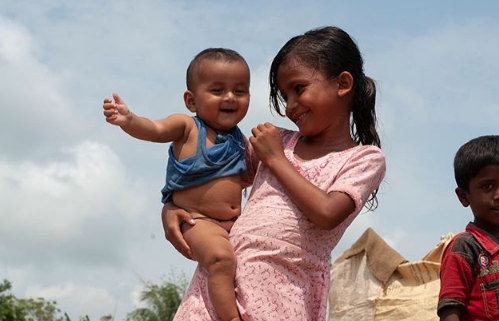6.3 million children died from preventable causes in 2017, highlights new report

A new report released by UNICEF, the World Health Organisation (WHO), the United Nations Population Fund and the World Bank Group has revealed that every 5 seconds a child dies from a preventable cause.
The report, titled ‘Levels and Trends in Child Mortality’ estimates that 6.3 million children under the age of 15 died from a preventable cause in 2017. Of these, 5.4 million occur in the first 5 years of a child’s life with new-born babies accounting for half of the deaths.
Laurence Chandy, UNICEF Director of Data, Research and Policy commented on the report’s findings:
"Without urgent action, 56 million children under five will die from now until 2030 – half of them newborns”
"We have made remarkable progress to save children since 1990, but millions are still dying because of who they are and where they are born. With simple solutions like medicines, clean water, electricity and vaccines, we can change that reality for every child."
The report found that Sub-Saharan Africa had the highest number of preventable child deaths, accounting for 50% of the total figure. In Sub-Saharan Africa 1 in 3 children die before their 5th birthday; compared to high income countries where this figure is 1 in 185.
Southern Asia accounted for 30% of preventable child deaths.
Around the world, the most risky period is a child’s first month, with 2.5 million children dying in their first month in 2017. However, there are significant regional disparities; a baby in Sub-Saharan Africa or Southern Asia is nine times more likely to die in their first month than a baby born in a high-income country.
Countries also have significant regional variations with under-five mortality being an average of 50% higher in rural areas.
Inequality in child mortality rate is also driven by social factors; around the world a child born to uneducated mothers are more than twice as likely to die before turning five than those born to mothers with secondary or higher education.
Dr. Princess Nono Simelela, Assistant Director-General for Family, Women and Children's Health at WHO added:
“Millions of babies and children should not still be dying every year from lack of access to water, sanitation, proper nutrition or basic health services”
“We must prioritize providing universal access to quality health services for every child, particularly around the time of birth and through the early years, to give them the best possible chance to survive and thrive"
The majority of under 5’s die due to preventable and treatable causes such as birth complications, pneumonia, diarrhoea, sepsis and malaria. Comparatively, among children aged 5 and 14 years injuries are a more common cause of death, notably drowning and road traffic incidents. Children within this age group are 15 times more likely to die in Sub-Saharan Africa compared to Europe.
Timothy Evans, Senior Director and Head of the Health Nutrition and Population Global Practice at the World Bank Group, noted:
"More than six million children dying before their fifteenth birthday is a cost we simply can't afford"
"Ending preventable deaths and investing in the health of young people is a basic foundation for building countries' human capital, which will drive their future growth and prosperity."
However, the report also highlights the significant progress made in addressing child mortality. The number of global child death have fallen from 12.6 million in 1990 to 5.4 million in 2017.
UN Under-Secretary-General for Economic and Social Affairs Liu Zhenmin added:
"This new report highlights the remarkable progress since 1990 in reducing mortality among children and young adolescents”
"Reducing inequality by assisting the most vulnerable new-borns, children and mothers is essential for achieving the target of the Sustainable Development Goals on ending preventable childhood deaths and for ensuring that no one is left behind”
The AIDF Global Summit will return to Washington in 2019, check out the highlights from this years summit here.
If you’d like to stay informed on the latest updates in aid and development, please sign up for the AIDF newsletter.
Image credit: UNICEF














-115x71.jpg)